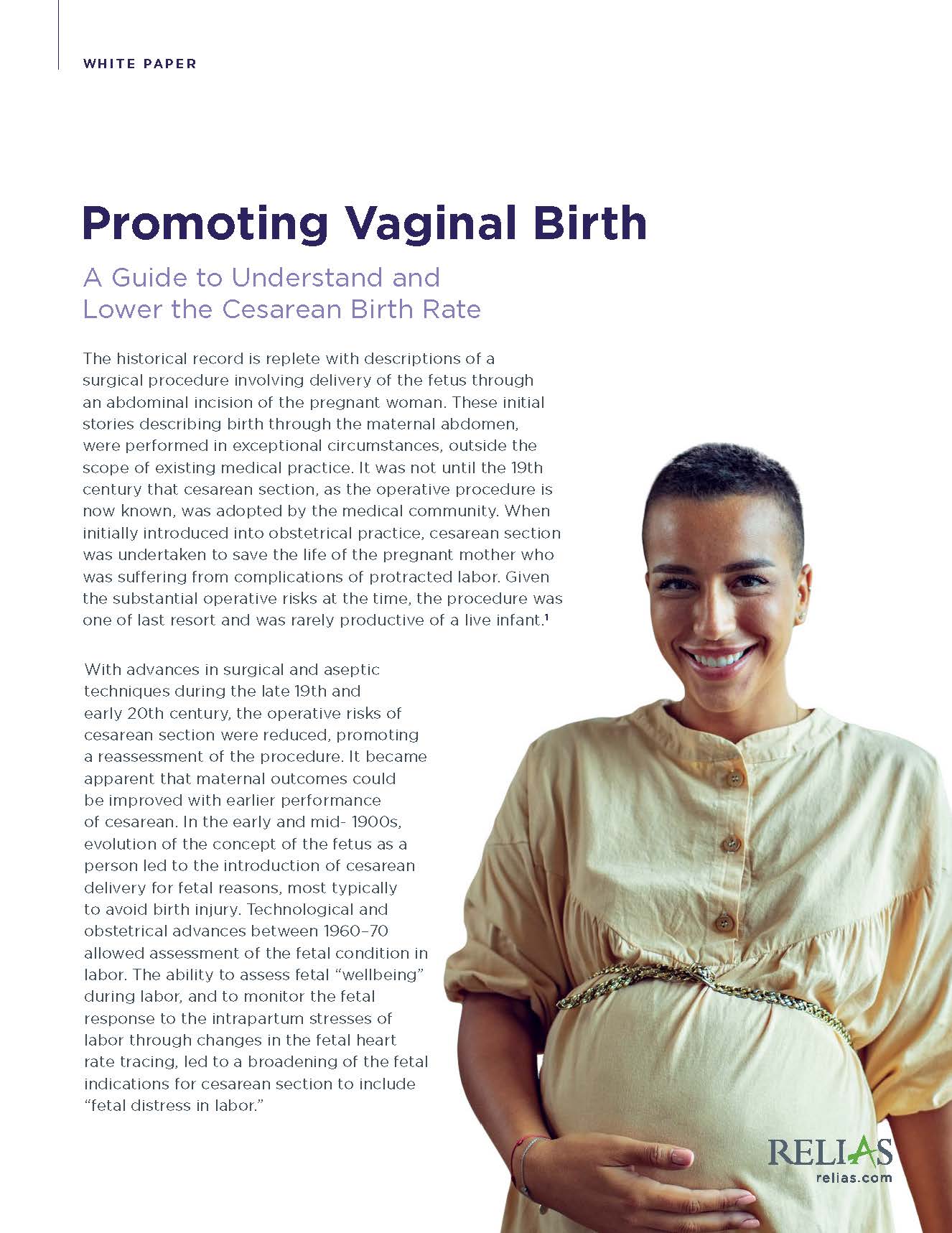To improve maternal health outcomes, obstetrics care professionals need to understand the answer to one fundamental question: Why is maternal mortality so high in the U.S.? The high rate of maternal mortality in the U.S. is the result of a complex combination of factors, including those related to variations in care, a social preference for caesarean sections (C-sections), and socioeconomics.
The Case for Reducing C-Sections
C-sections became commonplace during the 1960s with the introduction of improved antiseptics and surgical technology. By 1990, nearly 23% of births in the U.S. were performed using the procedure. As C-section rates grew during the late 20th century, so did awareness of the risks associated with the procedure.
Today, the Centers for Disease Control and Prevention (CDC) estimates that 31% of all deliveries in the U.S. were via C-section in 2018. Compared to the World Health Organization’s (WHO) ideal rate falling between 10% to 15%, it’s clear the U.S. has significant room for improvement.
Compared to vaginal birth, C-sections result in higher instances of maternal mortality, longer hospital stays, and excessive bleeding. Yet despite these risks, C-sections have continued to increase in popularity among patients — even when the procedure isn’t medically necessary.
First-time mothers with low-risk pregnancies are one of the most significant patient populations concerning C-sections. Once a woman has a C-section, there’s about a 90% chance she’ll have one for her next childbirth. This creates an ongoing cycle of increased risk to both mothers and babies.
Due to the heightened risk of maternal mortality, medical professionals and expecting mothers alike need access to comprehensive information about the procedure. Every member of the obstetrics care team should be well-informed of the risks associated with C-sections and empowered to communicate those risks to their patients.
Social Preference for C-Sections
A variety of factors lead to the high rate of C-sections in the U.S. For many working women without access to robust maternity leave benefits, the precise scheduling of the procedure is not only a convenience, but a necessity. Additionally, many American women believe C-sections are less risky and more technologically advanced than vaginal birth.
The WHO and the CDC encourage physicians to promote vaginal birth unless a C-section is deemed medically necessary. When hospitals deploy an effective, uniform strategy to combat overprescribed C-sections, they can help significantly reduce the risk of maternal health complications among their patients.
How California Successfully Reduced C-Sections
California has inarguably led the way in maternal mortality improvement within the U.S. The maternal mortality rate in California declined more than 55% from 2013-2016, in contrast to the overall rise in the U.S.
The California Maternal Quality Care Collaborative (CMQCC) has likely helped the state of California reduce its C-section rate. California successfully reduced its C-section rate by 10.5% from 2013-2019, compared to the U.S. decrease of 4.8%.
The multi-stakeholder organization (committed to ending preventable morbidity, mortality, and racial disparities in California maternity care) uses research, quality improvement toolkits, state-wide outreach collaboratives, and its innovative Maternal Data Center to improve health outcomes for mothers and infants.
Leveraging data and evidence-based best practices, the CMQCC developed resources to promote vaginal birth and reduce primary C-sections including toolkits, implementation guides, and more. These resources and focus on reducing C-sections have proven successful. California’s C-section rate of 23.8% in 2019 surpassed the Healthy People 2020 target of 23.9%.
C-Section Awareness and Education
Due to the higher risk of maternal health complications associated with C-sections, maternal healthcare experts within the U.S. and across the globe are encouraged to advocate for a vaginal birth when a C-section is not medically required.
Education is paramount when it comes to increasing vaginal births. Healthcare institutions across the U.S. must adopt a robust educational program that ensures all their obstetrics professionals have a sound understanding of C-section target rates as well as the research supporting vaginal birth.
However, knowing is just half the battle. Even evidence-based best practices take time to really take hold in hospitals. According to the Institute of Medicine, it takes an average of 17 years for a new medical protocol to be widely adopted.
Educating mothers and the public may help promote progress in reducing C-sections. Patient education is incredibly important for expecting mothers, who often believe C-sections are more advanced, safer, or easier than vaginal births. To reduce variation in C-section rates among hospitals, a comprehensive educational and promotional approach is key.
How Relias Can Help
Every hospital has a part to play in reducing the rate of maternal mortality. To minimize variation in care, hospitals must embrace evidence-based obstetrics education that facilitates a uniform approach to treatment. This type of approach eliminates ambiguity and provides healthcare professionals with the skills to quickly identify and treat the causes of maternal mortality.
Relias Obstetrics (Relias OB) is an assessment-driven education and analytics solution designed to help healthcare providers identify and reduce variation in care where it matters most. Relias OB casts a wide net, helping improve clinical practices and clinical outcomes in every part of the delivery room by providing all members of the obstetrics care team with critical maternal mortality insights.
Reducing maternal mortality and improving maternal health requires every hospital to take an evidence-based approach to maternal care. The courses offered by Relias OB (including Promoting Vaginal Birth) have been validated by the Association of Women’s Health Obstetric and Neonatal Nurses and accredited by the American Nurses Credentialing Center and the Accreditation Council for Continuing Medical Education.

Promoting Vaginal Birth: A Guide to Understand and Lower the Cesarean Birth Rate
The U.S. is faced with an unacceptably high rate of C-sections, including the increased risk of harm to moms and babies. Hospitals, providers, and nurses need insight into the factors driving high C-section rates and access to effective strategies to promote vaginal birth.
DOWNLOAD THE WHITE PAPER →





